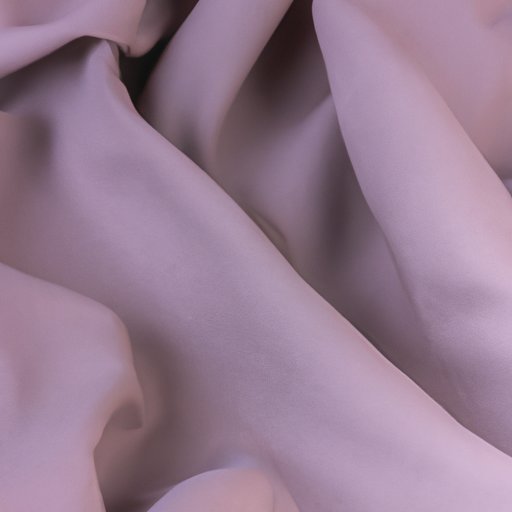Introduction
Lyocell is one of the most sustainable fabrics in the market today. Produced from natural materials and with a manufacturing process that minimizes environmental impact, it is a popular alternative to traditional cotton. Knowing about sustainable fibers like Lyocell is essential for those who want to contribute to the preservation of the environment and adopt eco-friendly consumption habits. This article presents a comprehensive guide to understanding this revolutionary fabric, its benefits, manufacturing process, and more.
The Benefits of Lyocell
One of the most notable benefits of Lyocell is its comparison to traditional cotton. While cotton is widely popular, the amount of water, pesticides, and chemicals required to produce it raises environmental concerns. Lyocell, on the other hand, is produced sustainably and requires lower amounts of water and chemicals, making it the better choice for conscious consumers. In addition to its sustainable features, Lyocell is durable, soft, and has good breathability, providing the wearer with a comfortable and long-lasting piece.
Fashion’s Latest Obsession: Lyocell Clothing Explained
Lyocell’s popularity in the fashion industry is growing. It is now a staple fabric that designers use in clothing production. The attraction is down to its comfort, function, and aesthetics. It makes a perfect choice for creating stylish, comfortable, and modern clothing. Lyocell is also versatile as designers can produce it in various ways and use it in multiple fashion styles like casual and formal clothing.
From Tree to T-Shirt: A Deep-Dive into the Manufacturing of Lyocell
Lyocell is produced through an extensive process using natural materials like eucalyptus, bamboo, and cotton. The manufacturing process minimizes environmental impact by recycling chemicals and water used in production and through energy-efficiency. Even the by-products of the production process are reused, minimizing waste. This sustainable aspect transforms lyocell into an environmentally-friendly option for clothing manufacturing. Responsible sourcing and production add value to the sustainable features of the fabric. It highlights the importance of being aware of where fabric comes from and the impact on the environment.
Exploring The Benefits Of Lyocell: The World’s Most Sustainable Fabric
The manufacturing process is not the only concept that makes Lyocell a sustainable fabric. Its environmental advantages include biodegradability and the ability to reduce carbon footprint. Lyocell is naturally-occurring and biodegradable, meaning it does not pollute the environment even after disposal. The water needed to produce lyocell is minimal compared to cotton, saving resources. The fabric also has a low carbon footprint, making it environmentally-friendly.
Lyocell: The Eco-Friendly Wonder Fabric Taking Over Your Wardrobe
Lyocell is expanding in the fashion and textile industry. The fabric is now used in household items such as bedding, curtains, and towels. The versatility of the fabric makes it possible to use it in creative ways for different applications. Moving forward, it is likely to grow more as the textile industry seeks sustainable solutions to reduce carbon footprint and protect the environment.
Conclusion
Lyocell is a sustainable fiber that presents ecological benefits to the wearer and manufactures. Compared with traditional cotton fabric, Lyocell’s sustainable production helps reduce water use, chemical use, and lessen environmental waste. It’s up to consumers to make conscious choices that reflect their values. Being aware of what materials clothing is made of, and their impact on the environment allows individuals to make informed decisions. Choosing sustainable fibers like lyocell is a small step to protecting our planet.
